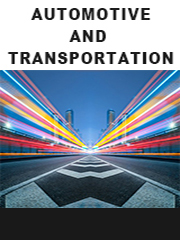Report overview
Automobile Synchronous Belt or Automotive Timing belt is a synthetic rubber belt, which reinforced with fiber cords. It is a ribbed belt placed in a specific configuration along one side of automobile engine to keep crank and camshafts timed properly. When the engine is on, the crankshaft converts linear energy from the pistons into rotational energy. The rotating wheel drives the timing belt and eventually the timing belt drives the two camshaft opens and closes the engine's valves to allow air and gas in and out of the engine. If the timing belt does not work well, the pistons and valves may collide, so drivers should replace timing belt regularly.
This report aims to provide a comprehensive presentation of the global market for Automobile Synchronous Belts, with both quantitative and qualitative analysis, to help readers develop business/growth strategies, assess the market competitive situation, analyze their position in the current marketplace, and make informed business decisions regarding Automobile Synchronous Belts. This report contains market size and forecasts of Automobile Synchronous Belts in global, including the following market information:
Global Automobile Synchronous Belts Market Revenue, 2018-2023, 2024-2029, ($ millions)
Global Automobile Synchronous Belts Market Sales, 2018-2023, 2024-2029, (K Pcs)
Global top five Automobile Synchronous Belts companies in 2022 (%)
The global Automobile Synchronous Belts market was valued at US$ million in 2022 and is projected to reach US$ million by 2029, at a CAGR of % during the forecast period. The influence of COVID-19 and the Russia-Ukraine War were considered while estimating market sizes.
The U.S. Market is Estimated at $ Million in 2022, While China is Forecast to Reach $ Million.
Rubber Synchronous Belts Segment to Reach $ Million by 2029, with a % CAGR in next six years.
The global key manufacturers of Automobile Synchronous Belts include Gates, Continental, Dayco, Mitsuboshi, Tsubakimoto, Bando, Hutchinson, ACDelco and Optibelt, etc. in 2022, the global top five players have a share approximately % in terms of revenue.
We surveyed the Automobile Synchronous Belts manufacturers, suppliers, distributors and industry experts on this industry, involving the sales, revenue, demand, price change, product type, recent development and plan, industry trends, drivers, challenges, obstacles, and potential risks.
Total Market by Segment:
Global Automobile Synchronous Belts Market, by Type, 2018-2023, 2024-2029 ($ Millions) & (K Pcs)
Global Automobile Synchronous Belts Market Segment Percentages, by Type, 2022 (%)
Rubber Synchronous Belts
PU Synchronous Belts
Global Automobile Synchronous Belts Market, by Application, 2018-2023, 2024-2029 ($ Millions) & (K Pcs)
Global Automobile Synchronous Belts Market Segment Percentages, by Application, 2022 (%)
Automotive OEM
Automotive Aftermarket
Global Automobile Synchronous Belts Market, By Region and Country, 2018-2023, 2024-2029 ($ Millions) & (K Pcs)
Global Automobile Synchronous Belts Market Segment Percentages, By Region and Country, 2022 (%)
North America
US
Canada
Mexico
Europe
Germany
France
U.K.
Italy
Russia
Nordic Countries
Benelux
Rest of Europe
Asia
China
Japan
South Korea
Southeast Asia
India
Rest of Asia
South America
Brazil
Argentina
Rest of South America
Middle East & Africa
Turkey
Israel
Saudi Arabia
UAE
Rest of Middle East & Africa
Competitor Analysis
The report also provides analysis of leading market participants including:
Key companies Automobile Synchronous Belts revenues in global market, 2018-2023 (Estimated), ($ millions)
Key companies Automobile Synchronous Belts revenues share in global market, 2022 (%)
Key companies Automobile Synchronous Belts sales in global market, 2018-2023 (Estimated), (K Pcs)
Key companies Automobile Synchronous Belts sales share in global market, 2022 (%)
Further, the report presents profiles of competitors in the market, key players include:
Gates
Continental
Dayco
Mitsuboshi
Tsubakimoto
Bando
Hutchinson
ACDelco
Optibelt
Bosch
Habasit
SKF
Megadyne Group
Schaffler
Tenneco(Federal-Mogul)
Ningbo Yujiang
DRB
Zhejiang Sanlux
Daishan Heiner
Ningbo Fulong
Zhejiang Kaiou
Zhoushan Dazhong
Outline of Major Chapters:
Chapter 1: Introduces the definition of Automobile Synchronous Belts, market overview.
Chapter 2: Global Automobile Synchronous Belts market size in revenue and volume.
Chapter 3: Detailed analysis of Automobile Synchronous Belts manufacturers competitive landscape, price, sales and revenue market share, latest development plan, merger, and acquisition information, etc.
Chapter 4: Provides the analysis of various market segments by type, covering the market size and development potential of each market segment, to help readers find the blue ocean market in different market segments.
Chapter 5: Provides the analysis of various market segments by application, covering the market size and development potential of each market segment, to help readers find the blue ocean market in different downstream markets.
Chapter 6: Sales of Automobile Synchronous Belts in regional level and country level. It provides a quantitative analysis of the market size and development potential of each region and its main countries and introduces the market development, future development prospects, market space of each country in the world.
Chapter 7: Provides profiles of key players, introducing the basic situation of the main companies in the market in detail, including product sales, revenue, price, gross margin, product introduction, recent development, etc.
Chapter 8: Global Automobile Synchronous Belts capacity by region & country.
Chapter 9: Introduces the market dynamics, latest developments of the market, the driving factors and restrictive factors of the market, the challenges and risks faced by manufacturers in the industry, and the analysis of relevant policies in the industry.
Chapter 10: Analysis of industrial chain, including the upstream and downstream of the industry.
Chapter 11: The main points and conclusions of the report.
